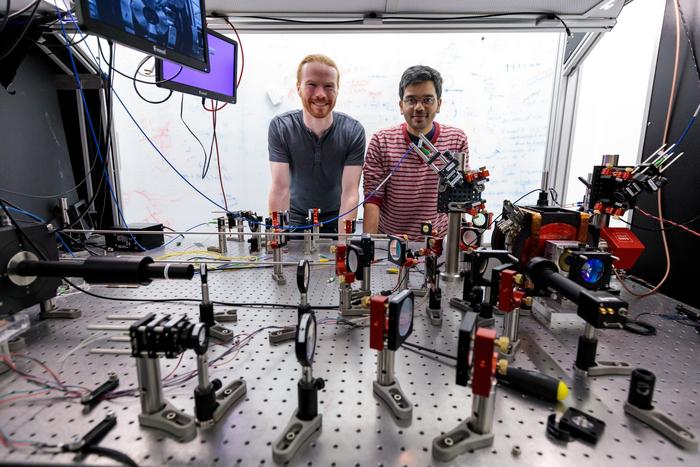Insider Brief
- University of Bristol, Phasecraft and Google Quantum AI researchers used quantum computers to determine low-energy properties of strongly-correlated electronic systems.
- Revealing these properties of electronic systems could help develop more efficient batteries and solar cells.
- The researchers leveraged a new, highly efficient algorithm and better error-mitigation techniques to work on the problem. Past research efforts with quantum computers could only solve small, highly simplified Fermi-Hubbard instances on a quantum computer.
- Funding sources include ERC and UKRI through the EPSRC Prosperity Partnership program.
PRESS RELEASE — Researchers from the University of Bristol, quantum start-up, Phasecraft and Google Quantum AI have used a quantum computer to reveal properties of electronic systems that could be used for the development of more efficient batteries and solar cells.
The findings, published in Nature Communications today, describes how the team has taken an important first step towards using quantum computers to determine low-energy properties of strongly-correlated electronic systems that cannot be solved by classical computers. They did this by developing the first truly scalable algorithm for observing ground-state properties of the Fermi-Hubbard model on a quantum computer. The Fermi-Hubbard model is way of discovering crucial insights into electronic and magnetic properties of materials.
Modelling quantum systems of this form has significant practical implications, including the design of new materials that could be used in the development of more effective solar cells and batteries, or even high-temperature superconductors. However, doing so remains beyond the capacity of the world’s most powerful supercomputers. The Fermi-Hubbard model is widely recognised as an excellent benchmark for near-term quantum computers because it is the simplest materials system that includes non-trivial correlations beyond what is captured by classical methods. Approximately producing the lowest-energy (ground) state of the Fermi-Hubbard model enables the user to calculate key physical properties of the model.
In the past, researchers have only succeeded in solving small, highly simplified Fermi-Hubbard instances on a quantum computer. This research shows that much more ambitious results are possible. Leveraging a new, highly efficient algorithm and better error-mitigation techniques, they successfully ran an experiment that is four times larger – and consists of 10 times more quantum gates – than anything previously recorded.

“The Fermi-Hubbard instance in this experiment represents a crucial step towards solving realistic materials systems using a quantum computer,” said Professor of Quantum Computation at the University of Bristol, Ashley Montanaro and Phasecraft co-founder. “We succeeded by developing the first truly scalable algorithm that anyone has managed to implement for the Fermi-Hubbard model. That’s particularly exciting because it suggests that we will be able to scale our methods in order to leverage more powerful quantum computers as the hardware improves.”
Phasecraft brings together many of the world’s leading quantum scientists and engineers and partners with the world’s leading developers of quantum hardware. Their research has led to fundamental breakthroughs in quantum science and is aimed at significantly reducing the timescale for quantum advantage in several critical areas. Beyond developing algorithms that will be able to scale to larger quantum computers, the Phasecraft team is also focused on continuing to build practically relevant features into their models so that they more accurately represent real-world systems.
“We are delighted to see this experiment designed and executed by Phasecraft, representing one of the largest digital fermionic simulations to-date, and also one of the largest variational algorithms to-date, performed on Google’s quantum computing hardware,” says Ryan Babbush, Head of Quantum Algorithms at Google AI. “The scalability of their approach derives from being state-of-the-art in terms of both error-mitigation and algorithm compilation for near-term quantum hardware.”
“This experiment represents a new milestone. It tells us what today’s quantum computers are capable of when we apply the best algorithmic technology available,” says Stasja Stanisic, Senior Quantum Engineer at Phasecraft, the paper’s lead author. “We can build on this work to develop better algorithms and better encodings of realistic problems for today’s devices.”
The work was partly funded by the ERC through Prof Ashley Montanaro’s Consolidator Grant “Quantum Algorithms: from Foundations to Applications,” and partly by UKRI through the EPSRC Prosperity Partnership scheme, which enabled the collaboration between the partners.
Paper
‘Observing ground-state properties of the Fermi-Hubbard model using a scalable algorithm on a quantum computer‘ by Stasja Stanisic, Ashley Montanaro et al in Nature Communications [open access]
If you found this article to be informative, you can explore more current quantum news here, exclusives, interviews, and podcasts.
Source: University of Bristol



















